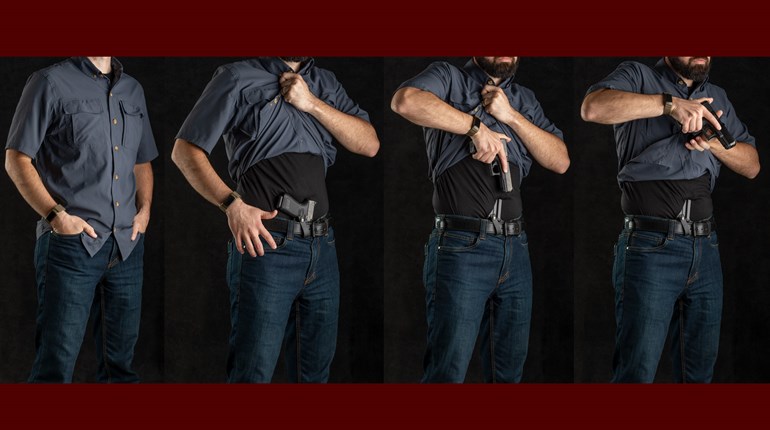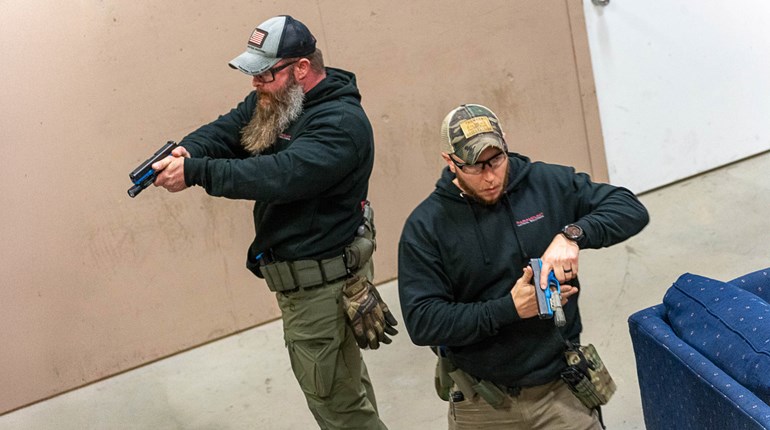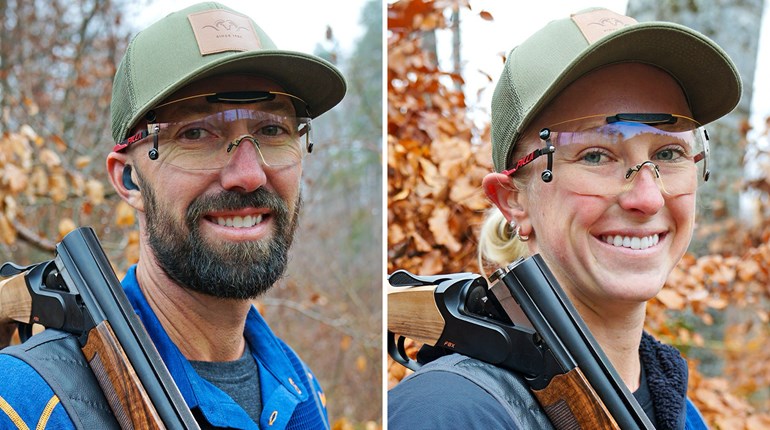
Above: A student at Gunsite Academy draws a Kimber K6s revolver from concealment during a 2017 course. (Photo credit: Straight 8 Photography)
I just spent several days at Gunsite Academy attending a very interesting concealed-carry seminar that was put together by my friend and colleague Dick Williams. The group included gun writers and industry folks and was led by Gunsite instructors Dave Hartman & Ed Head. Dave and Ed designed drills and scenarios that would challenge our notions about concealed carry instead of just making us feel good.
Let me give you an example. Suppose I ask you to stand at 5 yards and deliver two center hits in 2 seconds. Piece of cake, right?
It becomes a whole different proposition if you are challenged to do the same simple drill while drawing from under a concealed-carry garment. Can it be done? Of course it can, with the proper covering garment, proper defensive handgun and lots of practice. Did I mention lots of practice?
We all know that the deadliest threats come at close range. The threat is virtually in our face and we must evaluate that threat, decide what to do about it, and then act accordingly – and do it all as quickly as possible. Any covering garment is a hindrance to that quick response, but some more so than others.
In my opinion, based upon observations in this seminar, an open front garment (sports coat, jacket, vest) and strong-side carry are the fastest. Pull-over garments (sweatshirts, t-shirts, sweaters) and strong-side carry are next. Pocket holsters are quite a bit slower. Ankle holsters, belly bands, and tactical t-shirts (the kind with a pistol pocket), will usually just mean that you are carrying a gun that you can’t get to in time.
Another challenging drill that was devised by the Gunsite staff involved the use of their robot and was quite interesting. Imagine that you are sitting in your car at a convenience store and someone parks so that you are entirely blocked in and can’t drive away. Then the driver gets out of his vehicle and starts walking towards the store. It doesn’t appear to be a threat, merely an inconsiderate motorist. You call to him, “Hey buddy, you’ve got me blocked in. Could you please move your car?” With that, he spins and charges you, really fast, with a really big knife. And, let me tell you, that robot could sure cover the ground!
The first thing that you realize is that you probably should have gotten out of your car before calling out to the motorist because it is really difficult to draw from concealment when seated in a car. You also realize that this might be a really good time to create some distance between you and the advancing threat. It also might be a good idea to get a substantial barrier ( the car?) between you and the threat. And while all of these exciting things are going on, you are still trying to get your defensive handgun out from under concealment so that you won’t get chopped up into little pieces.
Instead of going with what looks cool, the armed citizen might consider various covering garments to see what works in his particular situation, giving special consideration to what allows the fastest pistol presentation. We should be more concerned with finding clothing that works, as opposed to what is fashionable.
Realistic consideration of concealed-carry requirements may also cause us to evaluate the type of defensive handgun that we choose. Big guns are easier to shoot accurately, but more difficult to conceal. Little guns are easier to conceal, but more difficult to shoot accurately.
Finally, an excellent exercise would be for several defensive shooters to get together and devise practice scenarios that challenge the way they carry concealed. Push the envelope, if you will. Too often, we are tempted to practice scenarios that just make us feel good about the way we carry.
Thanks to the guys at Gunsite, I am taking a long, hard look at the way I carry concealed. I hope that you will, too.



































